In today’s post: Learn how to organize school papers with a simple school memory binder. Keep all of your child’s favorite artwork, homework, report cards, etc. in one tidy place!
Anyone else drowning in school papers? My kids bring home loads of drawings, writing samples, math tests, etc., every week, and they don’t want to throw away ANY OF IT. Not even one piece. It’s gotten so bad that I’ve tried to throw it away when they’re not looking, but then I forget to take out the trash and one of my children saw her beautiful artwork in the garbage and then there are tears and I felt like the worst mom ever… And just in case you think I am the worst mom ever for throwing away any of my kids’ precious artwork, take a minute to imagine what my house would look like if I kept every single piece of school paperwork that each of my FIVE children produced every year.
Obviously, I don’t need piles of school papers accumulating in every room in my home. Frankly, I don’t even want a whole box for each child, because no one is ever going to look through an entire box-worth of school papers. I promise. What I want is a nice tidy binder (or two) for each child that holds their very favorite work from each year of school. Something that’s organized and pared down enough to truly be a keepsake that will be fun to look through in years to come.
So that’s what I’ve made! Today I’m going to show you how to organize those piles of school papers into one tidy school memory binder.
How to organize school papers
Step 1: As school papers come home, save special drawings, writing assignments, reports cards, or anything else your child is attached to. Use a filing cabinet or a shelf in a closet to keep anything that feels special. Don’t worry too much about organizing things now, just collect anything your child isn’t willing to throw away.
Step 2: Create a school memory binder. Get a 2 or 3 inch three ring notebook for each child and place 25 page protectors inside it. Then download the free year in review divider pages for each grade by clicking here. The set includes preschool, kindergarten, and grades 1-12. Print it out at 100% on cardstock. Slide each divider page into a page protector. You can also download a cover page here.
Step 3: At the end of each school year, have your child fill out the year in review printable for the grade she has just finished. She can write her name, record the year, and fill out some information that will be fun to remember later: names of teachers and friends, favorite books, favorite field trips, and favorite activity from that year. Adhere a 5×7 photo to the divider page as well.
Then pull out all the papers you’ve saved from that year and ask your child to choose 10-15 that are her absolute favorites. The favorites go into the binder, and the rest can get recycled. It’s much easier to convince kids that it’s ok to throw away some of the paperwork when they see you are saving their favorites in a binder they can look at any time they want!
As the years go on, you’ll continue to add to the binder. If there are lots of special papers you’d like to keep, you may end up using two or three binders for each child. This is the easiest way I’ve found to organize school paperwork.
What if your child is already in fourth grade and you’re just starting this project now? Well, no problem! Pull out all the paperwork you’ve saved so far and start dividing things up into grades. Help your child pare down the papers to 10-15 from each grade, and have him fill out the year in review pages for each grade as well as he can remember. Get the binder current up to now, and then it will be ready to keep going in years to come.
Even if you don’t want to create a binder to organize school papers, it’s still fun to print out the year in review printables as a way to document the last day of school each year!
Looking for more ideas for kids? Visit these posts:
101 Summer fun ideas you can do at home
50 easy INDOOR kids crafts and activities
How to make a marshmallow launcher

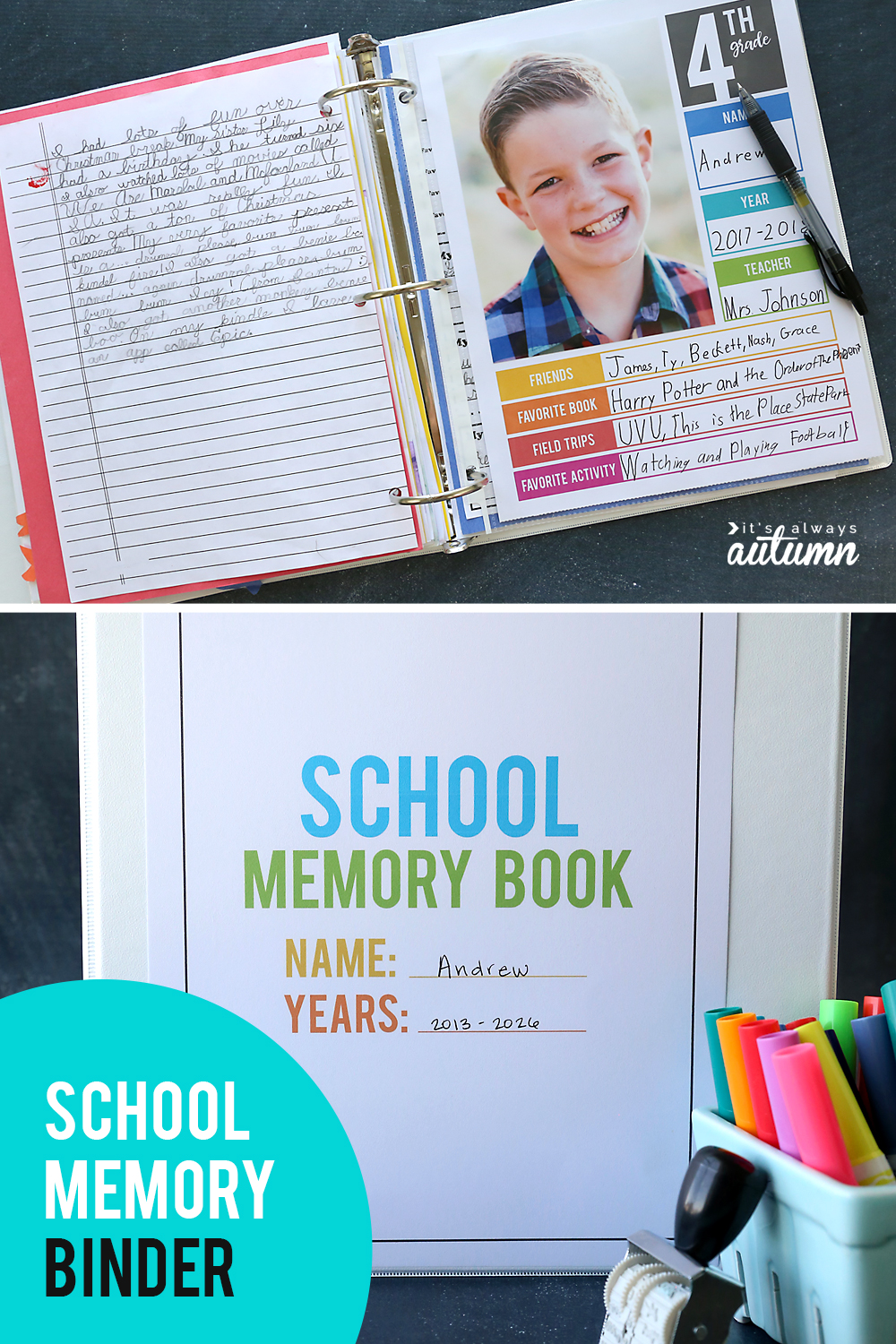
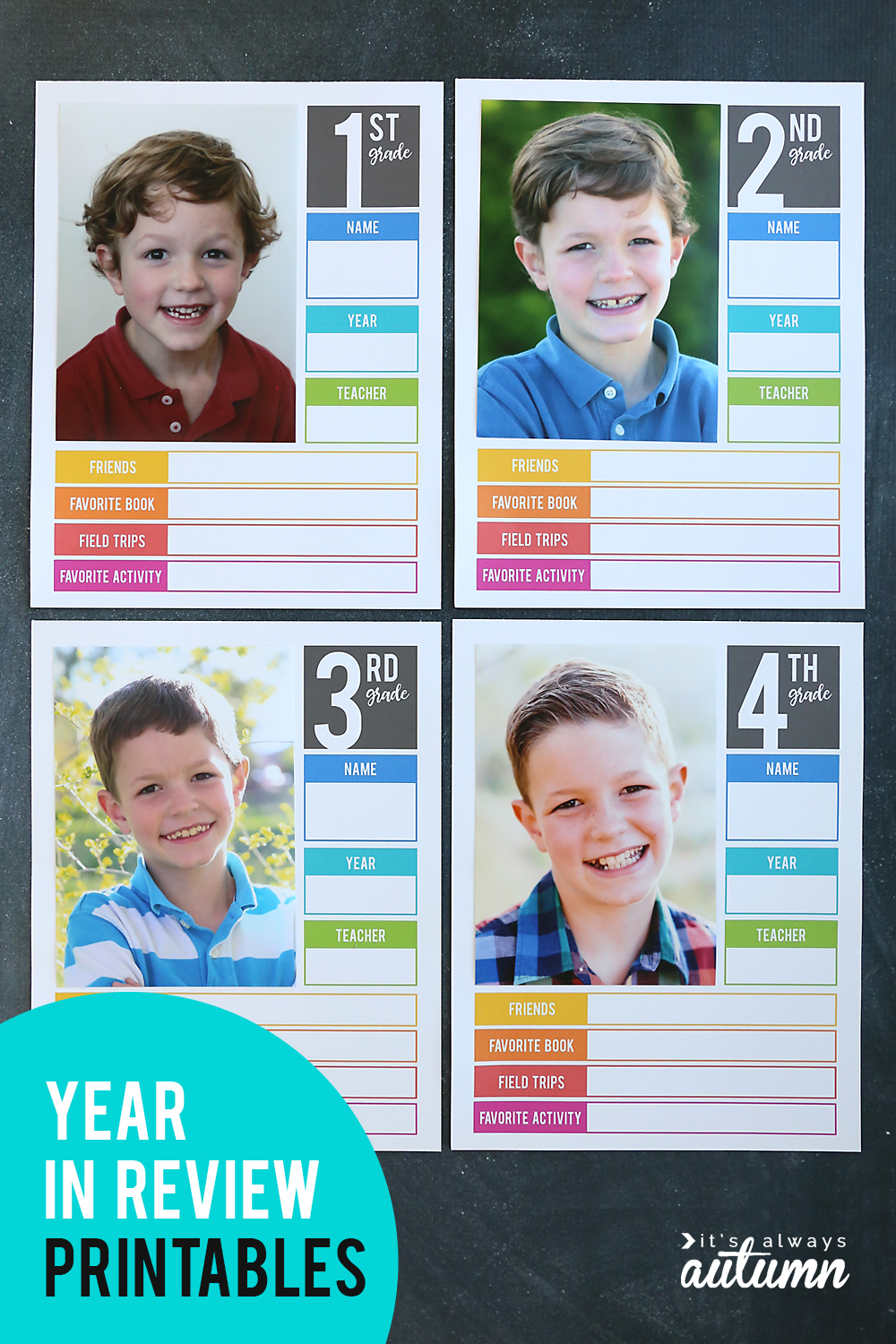
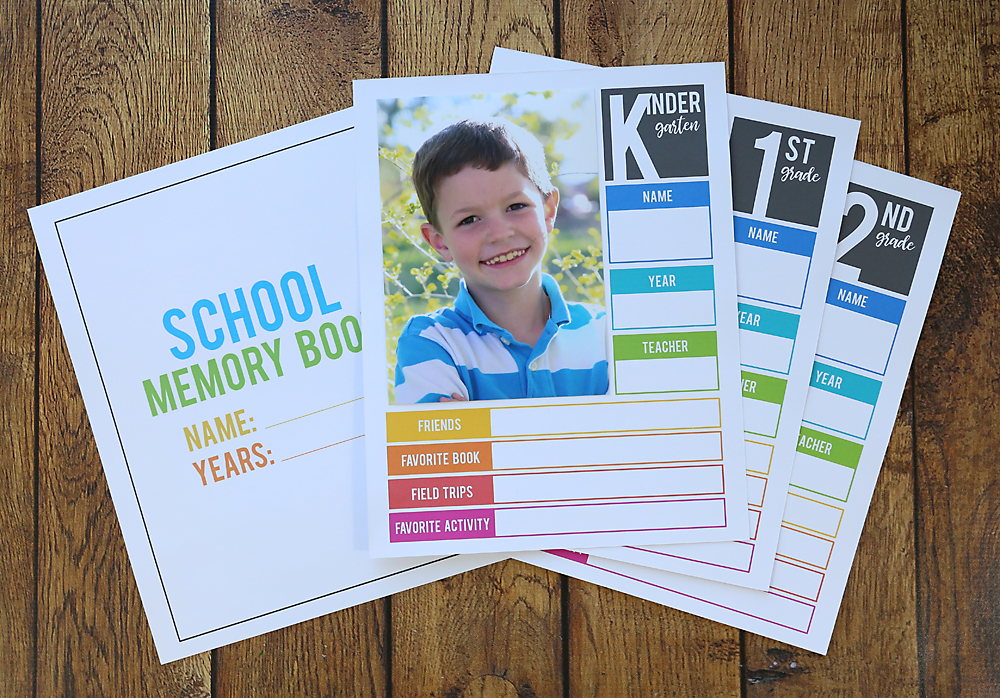
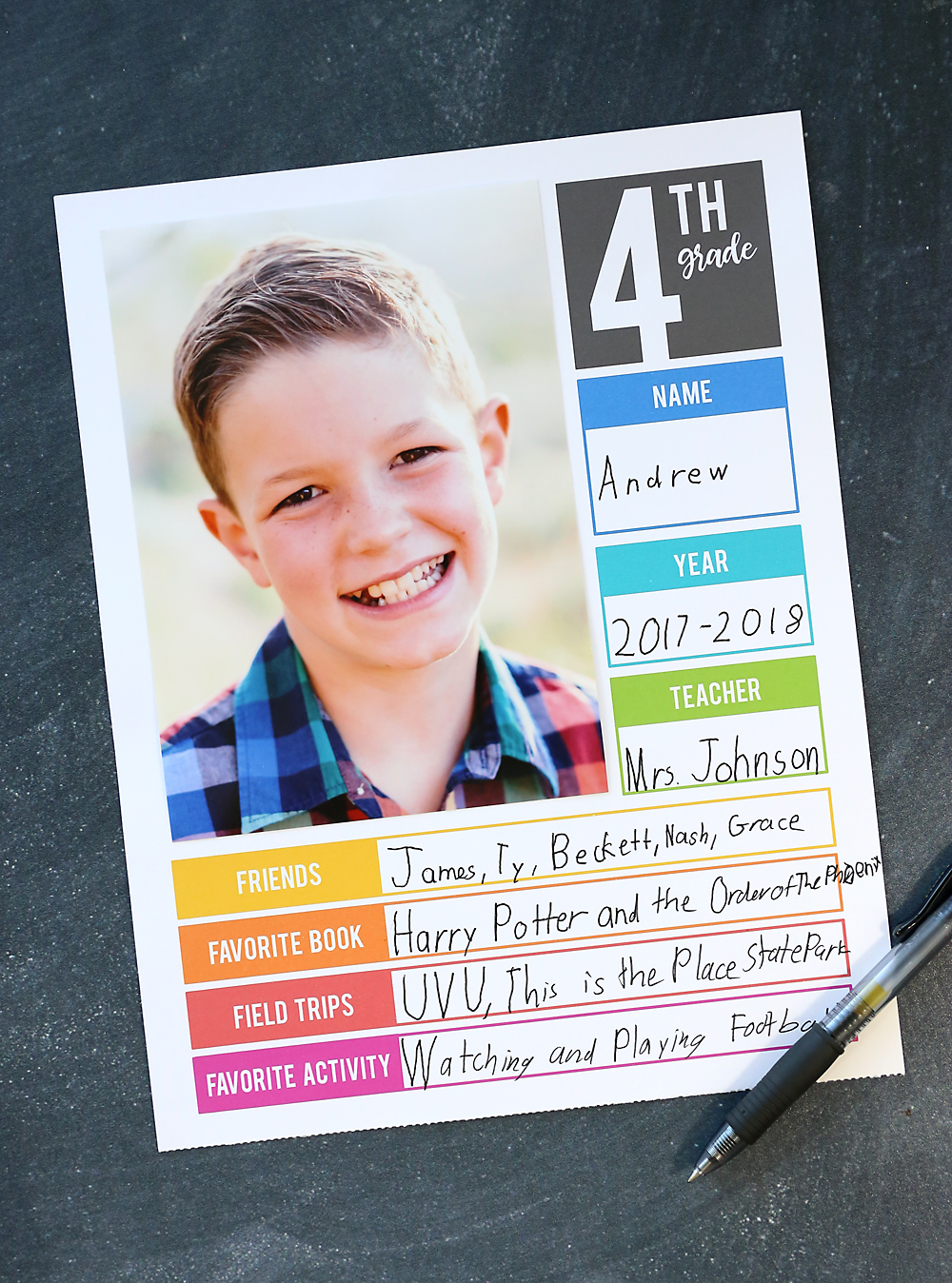
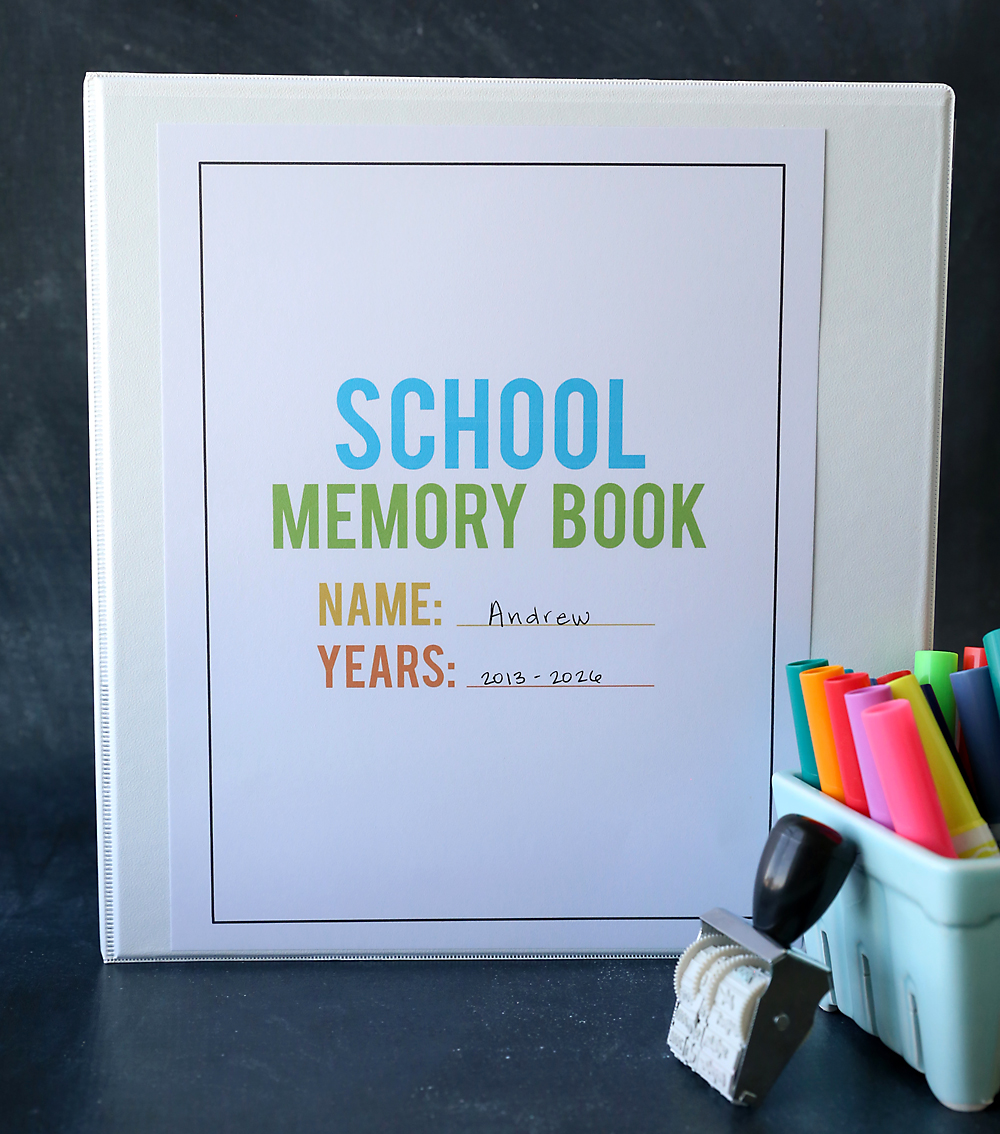
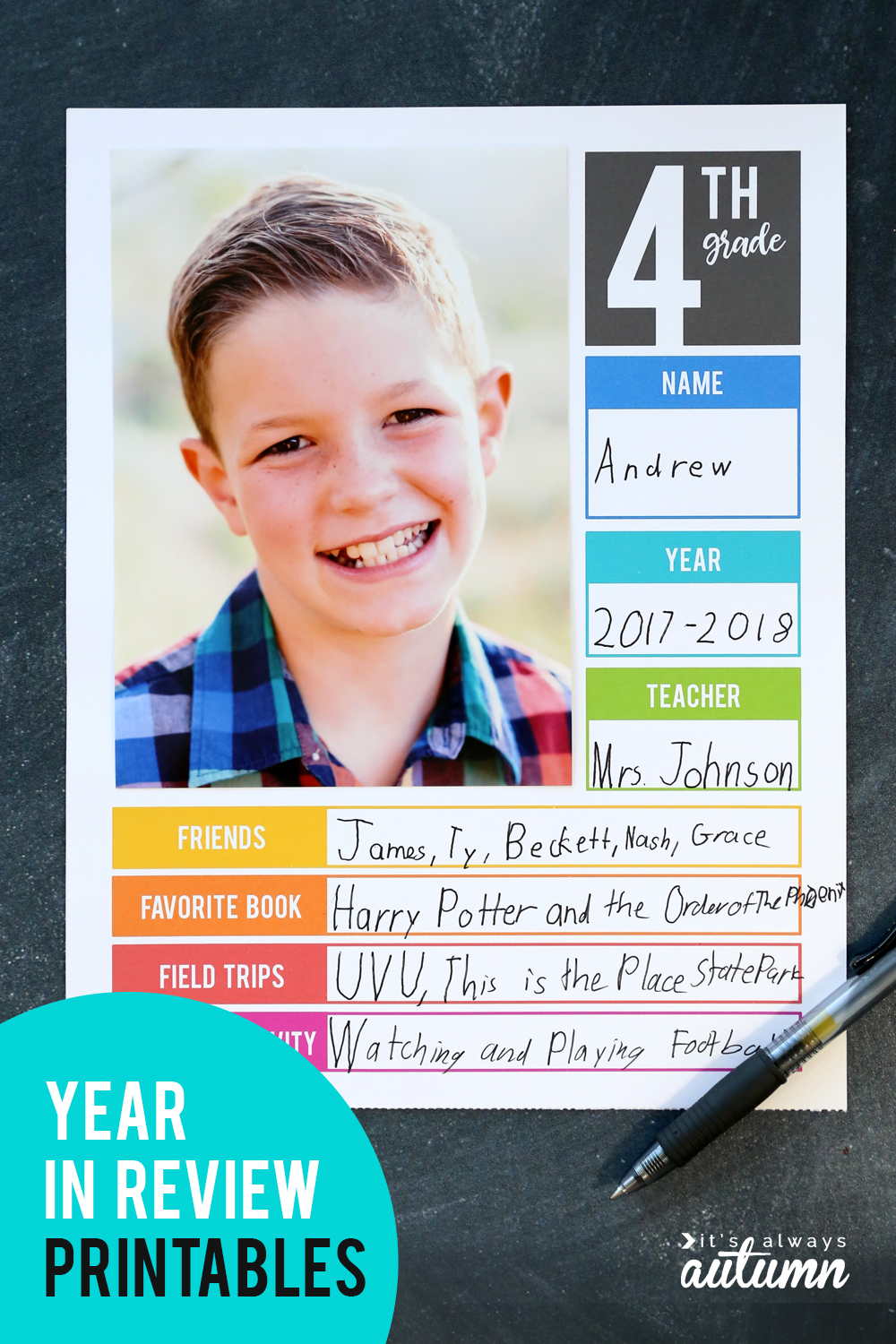





Teresa Hicks says
Hello
I also printed the older version of the school photo templates and you send me the 6-12 grade?
Thanks,
Teresa Hicks
Cryl Geltmaker says
These are perfect! Thank you for sharing the downloads. I’m finally getting everything for my 15yr old son’s book together. LOL
Edna M WALKER says
You can also take a digital snapshot of the child’s work or projects and create a school portfolio. There are ways to store and display for later the work. In class I often took photos of papers that parents had to sign and return to the office. Some times the papers got lost in the office and I would have proof that the paper work was turned in. At the end of the year I would delete everything and start again with a new class the following year.
Stephani says
I love this idea! I dated a guy briefly in high school and his mom had something similar to this displayed at his graduation party. I’ve wanted to do this for my future kids ever since! My oldest will start kindergarten next year. Thanks for the printables!